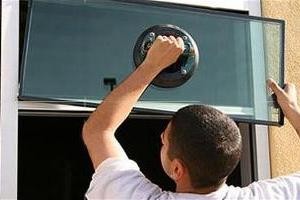Types of UPVC Door Hinges
Jewson offers a wide range of uPVC door styles for your home that are ideal for transforming or upgrading. If your uPVC door is catching on the floor or allows in draughts, it is most likely due to the hinges being not aligned properly.
To resolve this issue It is crucial to know the various types of hinges for doors made from upvc. Here are window hinge repairs to help you determine the problem.

UPVC
UPVC hinges are used to support doors when they are shut and opened. They come in a variety of sizes and colors and are designed to be used with wood as well as uPVC doors. They can also be attached to both external and internal doors. It is important to select the appropriate kind of UPVC door hinge for your door before you start fitting them.
uPVC is the abbreviation for Unplasticized Vinyl Chloride and is a popular material for a variety of applications, including window sills and frames. It's a long-lasting and low-maintenance product that is frequently contrasted with aluminium and timber for its strength, cost-effectiveness, and ease of installation.
Hinges are a vital part of any door. A properly fitted one can cut down on the noise and draughts, and also provide more smooth opening and closing action. They are usually attached to the jamb of the door as well as the door itself. It is important to install them correctly to ensure they function smoothly.
There are a variety of different kinds of UPVC hinges available. It's crucial to know the type of hinge you have prior to making any repairs or adjustments. If you own an Butt hinge, T hinge or flag hinge, for instance, it's essential to understand what each type of hinge is capable of and how to adjust them when needed.
The Butt hinge is a standard feature on uPVC doors and is generally connected to the frame of the door as well as the edge of the door sash. This is the most common design of uPVC door hinge. It provides lots of movement and a streamlined design for your home. This style of hinge is usually adjustable too, allowing you to tweak the position of your door and its alignment as time passes.
On the other hand, if you've got a T-hinge, you'll find a screw that can be adjusted on the bottom. This can be used to alter the hinge's compression by adding or removing shims. It is best to begin by turning the screw for a few times, then try it, and then make any further adjustments if required.
A flag hinge is akin to a T hinge in that it's designed with a knuckle plate which has a 'flag-like' cutout at the top, allowing full movement and rotation. This is a simple-to-adjust uPVC type hinge. Simply loosen the screw near the knuckleplate and add shims or remove shims if you want to increase the compression.
If you have a Butt or a flag hinge, it's essential to inspect your uPVC doors hinges regularly. It's normal for them drop or become misaligned over time, particularly when the door is frequently opened and closed. Our easy guide with diagrams and videos will help you understand how to adjust your hinges made of uPVC. Follow the guidelines to avoid any damage or issues.
Butt
Hinges, the hardware part that holds your doors and windows in place, are available in a variety of sizes, shapes, finishes and materials to fit different needs. The right hinge depends on the location of the project as well as the aesthetic you are trying to achieve. If you require a heavy duty hinge for your barn door or you just want to add a few attractive touches to your cabinet, the possibilities are endless.
Butt hinges, or stub hinges, are the most common kind of door hinge. They're easy to install and provide sturdy support for doors and frames without adding weight. However they're not as sturdy as other hinges and could require more maintenance over time.
A butt hinge is comprised of two leaves or plates with screw holes on each. They are drilled into the surfaces of the door and frame. They're joined together by a central pin which is located in the knuckle segment of each plate. When doors are closed, the hinge pin is hidden so that only the knuckles are visible.
Because they have a wider knuckle than the other types of hinges, butt hinges can support more weight than other types. They are not recommended for doors which will be opened and closed in a continuous manner, since the abrasion may cause premature wear.
Butt hinges are only suitable for surfaces with recess. Typically they drill a hole into the fixed object to accommodate the hinges but sometimes, the hinges are attached to the surface by using a special fastener.
Butt hinges are available in a wide range of finishes and materials that match any interior or exterior door, from traditional wood to contemporary metals. They also come in various sizes to fit into any door and frame setup.
Butt hinges are available in a variety of styles including ball tip and strap. These hinges provide the same functions as a standard butt hinge, but with a more attractive flair.
While butt hinges are simple to install and offer an extremely solid and reliable structure but they are also susceptible to security breaches due to their visible. The exposed pins can be removed and hinges damaged which makes it easier for intruders to bypass locked doors. All hardware components should be inspected and lubricated regularly to avoid this. This reduces the friction that causes the hinges becoming noisy or binding, and increases their lifespan.
